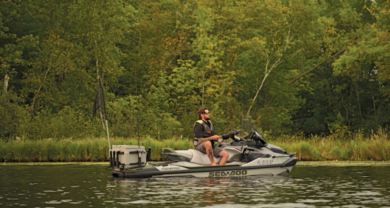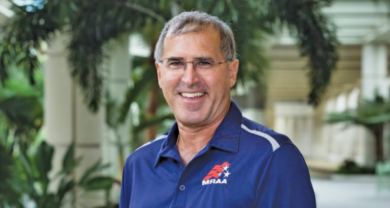2013 Movers & Shakers
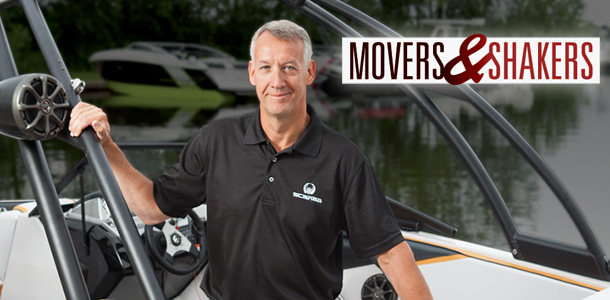
If a willingness to take risks and embrace change means anything, the 2013 class of Boating Industry Movers & Shakers may be the strongest yet.
There’s no concrete set of qualifications for the Movers & Shakers. It’s not necessarily about being the biggest or all about the financials. Instead, we’re looking for leaders who haven’t been afraid to take chances, to rethink the way they do business, to embrace the challenges facing the marine industry.
From rebuilding venerable brands to embracing eco-friendly technology to leading the industry through the increasing challenge of government regulations, this group of leaders is shaping where we are headed as an industry.
The fact that they’ve done it during an unprecedented downturn in the industry makes it all the more impressive.
 Here we recognize our 2013 Mover & Shaker of the year – Roch Lambert of Rec Boat Holdings – along with more than a dozen other individuals shaking up the marine industry.
Here we recognize our 2013 Mover & Shaker of the year – Roch Lambert of Rec Boat Holdings – along with more than a dozen other individuals shaking up the marine industry.
MOVER & SHAKER OF THE YEAR
Roch Lambert, President
Rec Boat Holdings
Cadillac, Mich.
One thing Roch Lambert never wants to do is run a routine business.
“I enjoy coming to work and having to fight for survival every single day,” said the president of Rec Boat Holdings, owner of the Four Winns, Glastron, Wellcraft and Scarab brands.
Since taking the job at Rec Boat Holdings three years ago, Lambert has led the team in rebuilding the brands by focusing on improving quality, revamping the product offering and strengthening the dealer network. Before Platinum Equity acquired the brands in 2010, they had suffered from a lack of investment as previous owner Genmar suffered financial problems and eventually bankruptcy.
It’s not Lambert’s first time going through this process. Over a long career at Bombardier/BRP, he specialized in challenging jobs from rebuilding the company’s Sea-Doo jet boat business to leading Evinrude through its acquisition by the company following the OMC bankruptcy.
From making sure Rec Boat Holdings has the right controls in place to recognizing the need to have people he can trust in place around him, Lambert has applied many lessons learned from those experiences.
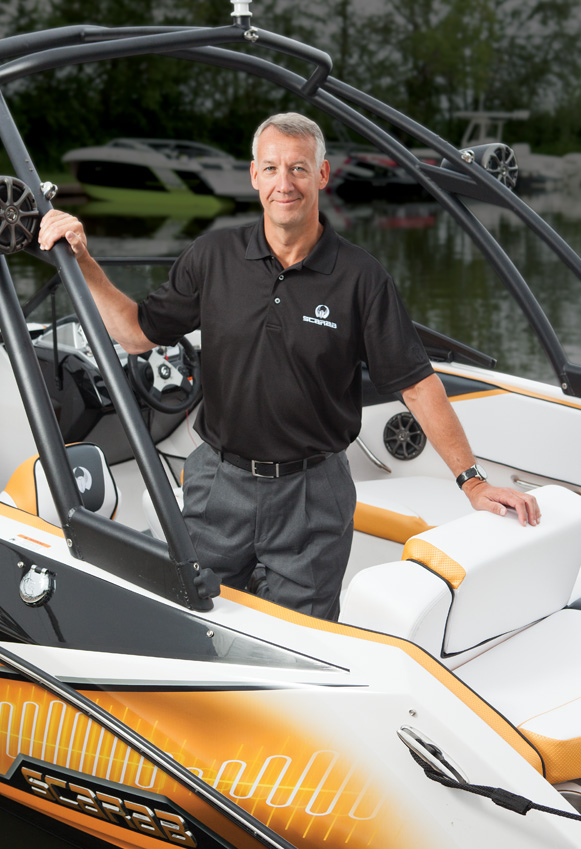
“It was important to put a plan in place and stick with that game plan,” Lambert said. “We did a great job of identifying our opportunities three years ago, and the progress we’ve made toward those goals has made us sustainably profitable today. We always want more, but we’re in a very good place right now.”
One of the biggest challenges was rebuilding confidence in the brands, both internally and externally. From employees to dealers to suppliers, many people needed to be convinced that Four Winns, Glastron and the rest were going to survive.
“It was difficult. They’ve gone down twice,” he said. “After two bankruptcies, the dealers were pretty fed up with what was going on.”
From the beginning, communication was key, sharing the recovery plan with dealers, suppliers and associates. That plan focused on three pillars: fixing internal quality issues, improving the products and strengthening the dealer network. That message hasn’t changed for the last three years by design.
“I think this company has shown we are going to be consistent, we are going to be predictable and we are going to bring opportunities to the table to grow your business,” Lambert said.
Internally, the management team needed to rally employees around a recovery plan that might not always appear to make sense.
“This is my third turnaround and experience has shown me that it’s not as obvious to everybody what the end result is going to be as it is for me,” Lambert said. “I told them, ‘We’re probably going to make decisions for a while that will seem really odd and maybe wrong in your eye. I’m just asking you to trust.’”
One area in desperate need of attention was product design. If Rec Boat Holdings was going to improve sales, keep its best dealers and attract new partners, the long-neglected brands needed to be revamped.
“At the end of the day, the dealers rely on what we bring to the table to grow their business,” Lambert said. “If we don’t feed them good product … their growth opportunities are going to be limited.”
Toward that end, Rec Boat Holdings has invested millions in research and development over the last three years, rolling out more than 30 new and revamped models across the brands for 2013 and 2014 alone.
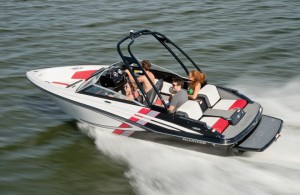
Most notably, Rec Boat Holdings has jumped into the jet boat market for 2014, introducing a line of boats powered by BRP’s Rotax engine technology. The first jet model, Glastron’s GT187, was rolled out at the company’s dealer meetings in July.
Most of the boats, though, will be under the relaunched Scarab brand. The Scarab name had been kept alive for the last several years as a line of offshore fishing boats under the Wellcraft brand, but will now continue as the centerpiece of the Rec Boat Holdings jet boat strategy.
With BRP’s decision to shut down the Sea-Doo sport boat division in 2012 and license its engine technology instead, Rec Boat Holdings saw an opportunity to grow. Combine that with his and others’ experience with the Sea-Doo line and it was a natural fit, Lambert said.
“It fit perfectly our criteria for expansion,” he said. “It complements what we do 100 percent, it leverages our manufacturing capacity and capability and it allows us to strengthen our network.”
The jet boat rollout has excited both existing dealers and those who have no relationship with other Rec Boat Holdings brands.
“Dealers are calling because of the Scarab name, its brand equity,” Lambert said. “The response has been far beyond my expectations. The requests we’ve had from people around the world for the product has been phenomenal.”
Finding new ways to grow, either through acquisitions or new product launches, is an important part of Rec Boat Holdings’ plans, especially as the company’s core sterndrive market continues to struggle. Lambert is expecting little growth in the sterndrive category, so the focus is on gaining market share and expanding with complementary segments.
By embracing those challenges, Lambert hopes he’s leaving a lasting mark on Rec Boat Holdings.
“My No. 1 passion is to make everybody here a winner,” he said. “Someday if there’s a legacy here, I’d like people to say, ‘When he showed up it was in bad shape and when he left it was in great shape. We had a lot of fun and made it a success.’”
MOVERS & SHAKERS FINALISTS
Brock Elliott, President
Campion Marine
Kelowna, British Columbia
When asked why Campion Marine has invested so heavily in eco-friendly technology, company President Brock Elliott has a simple answer: “It’s the right thing to do.”
From research into electric outboards to building with bioresins to improving recycling efforts, Campion has wholeheartedly embraced green practices under Elliott’s leadership the last several years.
“Our industry is not considered a real green industry,” he said. “If we can do something, it’s important to us, it’s important to me.”
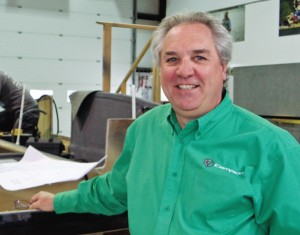
Campion’s dive into green technology started simply enough when Ashland Composites contacted the company in 2008 to ask if Campion would build a boat using Ashland’s new Envirez bioresins.
Although a global company, Ashland has a plant in Kelowna, making Campion a natural partner for the venture. Campion agreed to build two boats with the soy- and corn-based resins, an 18-foot Chase 550 and a 21.5-foot Chase 600.
“We built them and beat the hell out of them on Lake Okanagan,” Elliott said. “We froze them in the winter, baked them in the hot summers. Two years of testing them and the boats were phenomenal with no issues at all.”
The success of those boats prompted Campion to switch over completely to building all of its models with bioresins starting in 2010. At the same time, Mark Hayhoe, an Ontario business owner who was looking for an eco-friendly boat, heard about Campion’s work with Envirez and contacted the company about building him a bioresin, biodiesel-powered boat. Using a modified Volvo engine, Campion was able to get him the boat he wanted.
Although built as a one-off, it led Elliott to the important “a-ha” moment that completely changed Campion. On the way home from showing Hayhoe’s boat at the 2010 Toronto International Boat Show, Elliott asked himself what if Campion applied the lean manufacturing methods it was already using to going green?
By the time he got back to Kelowna, Elliott had a new mission for his management team: look at every step of our production process and decide if there’s a better way to do it.
“What’s the first thing we do?” he said. “We bring the mold in from outside, get it to the right temperature and we clean it. So the first thing we’re going to look at: When we clean that mold, are we doing it the greenest way?”
Campion started using different solvents, a low-emission gel coat and a non-toxic flotation foam, to name just a few changes. Elliott told the company’s suppliers he wanted them to embrace eco-friendly products and practices. Those that couldn’t were replaced by other companies.
“Once you get on going green, and you’re known for it, people start bringing you more ideas,” Elliott said. “Every supplier that comes here knows we’re green.”
All of those efforts have resulted in numerous awards from industry groups and local officials, generating plenty of positive buzz. There have also been significant financial benefits for Campion. For example, the company undertook an aggressive recycling program, saving thousands of dollars a month in waste disposal fees. Earlier this year, the company installed new halogen lights in the lamination plant that, between tax credits and reduced energy costs, should also save thousands.
Most recently, Campion entered into the electric outboard market when its dealer in Switzerland brought Florida-based ReGen Nautic to Elliott’s attention.
Starting with a Yamaha 150-hp gas-powered outboard, Campion and ReGen Nautic built the world’s first 180-hp electric outboard, powering a Chase 550. Campion has delivered the boat to that Swiss dealer, but is, for now, putting wider production of the engine on hold. The key challenge is the battery life. For its tests, Campion got about two hours of run time off of the outboard, running at 30 to 50 mph.
With all of the research being done by automakers and others into electric engines it’s only a matter of time before the tech is ready, Elliott said.
“What the project did do was opened our eyes up to the electric outboard motors to the point that I want one, that you’ll want one,” he said. “All of these very smart companies are working on battery technology and when they get a breakthrough, we’ll be ready to go to the marketplace.”
Besides all of the obvious benefits, the embracing of green technology at Campion has also revitalized a workforce battered by the recession.
“Because we’re doing this, we’re getting more innovative thinking going through all of the factory, all of the employees,” Elliott said. “They’re not sitting stagnant – they’re coming up with ideas.”
John McKnight, Director
Environmental & Safety Compliance
National Marine Manufacturers Association
There’s probably been no industry issue that has garnered more attention in recent years than E15.
From lawsuits to legislative efforts, people, companies and associations throughout the marine industry have been working to keep the 15-percent ethanol blend out of marine engines.
While the Environmental Protection Agency has said E15 should not be used in marine engines, there are significant concerns about misfueling and mislabeling. For more on E15, check out the April and July issues of Boating Industry, as well as our continuing coverage on BoatingIndustry.com.
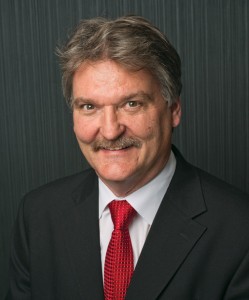
John McKnight has been at the forefront of these efforts for years, working on the research side of the problem as the National Marine Manufacturer Association’s director of environmental and safety compliance. Along with representatives from engine makers and others in the industry, McKnight has been leading the research into the damage E15 causes as well as alternatives to the fuel.
“I always say, ‘Let’s get good data,’” McKnight said. “Let’s start collecting good data so when we go up to the hill, we have our ducks in a row.”
It’s an approach McKnight has advocated since coming to the NMMA in 1994. That’s when he was hired out of the chemical industry to work on the pending engine rules as the marine industry had its first major brush with regulators. He has worked at both the federal and state levels, and has lead the NMMA’s enginemaker members through negotiations with several groups, including the California Air Resources Board (CARB).
Now his attention is squarely on the fuel issue, most recently the potential of isobutanol as an alternative to ethanol. Under a grant from the U.S. Department of Energy, industry researchers have been evaluating isobutanol with overwhelmingly positive results. Testing a 16-percent isobutanol blend (B16), they’ve found that B16 has more energy content than ethanol and creates similar emission levels to those of E10. At the same time, it doesn’t have the negatives effects of engine corrosion and phase separation that are encountered with ethanol, especially E15.
The group tested B16 and E10 on a number of different engines ranging from 10 hp to 200 hp from Tohatsu, Mercury and Evinrude, for 350 hours per engine. They even ran isobutanol through a 1999 150-hp Johnson outboard that Evinrude still had in storage.
“It’s a much better biofuel than ethanol,” McKnight said. “We know that anything over E10 is going to be a problem for millions of people.”
It’s important to note that the industry is not against protecting the environment as some have painted it during the E15 dispute, McKnight said. Instead, it’s about finding the best solution, driven by science and sound research.
“We need to take a timeout and take a look at where we want to go as a nation as far as fuel,” he said. “Our goal is to just have a fuel that works for us. We can protect the environment and at the same time have our consumers have a positive boating experience.”
This year, the industry’s research has focused on a tri-fuel blend of 87 percent gasoline, 8 percent isobutanol and 5 percent ethanol. That may be a promising way to introduce isobutanol into the market, McKnight said.
The problem with isobutanol at this point is one of availability, with only small quantities currently being produced. The two major companies working in the market are Gevo, which is converting ethanol plants to isobutanol, and Butamax, a joint venture between BP and DuPont.
“If they can start making it in quantities that make sense, there are benefits that butane provides that ethanol doesn’t,” McKnight said.
Whatever happens with isobutanol, the research-based approach to the issue has paid dividends for the marine industry, grabbing the attention of legislators as they debate revamping the Renewable Fuel Standard.
“Congress is calling NMMA and saying, ‘Can you come up and talk to us?’” McKnight said. “There are a lot of followers in this discussion, but we’re leading.”
Lou Sandoval, Co-founder
Karma Yacht Sales
Chicago
If Lou Sandoval hadn’t bought a “junky” 1978 AMF Paceship with three partners in 1997, things might have turned out differently.
In the middle of a very successful career in the medical industry, Sandoval and his friends were just looking for a way to get out on Lake Michigan when they bought the yellow boat with “Brady Bunch interior.”
“It was ugly, unsightly, but it got us out on the water,” Sandoval said. “Perfect for four bachelors to go out on and smoke cigars and talk about life.”
They quickly realized, though, that the 20-year-old vessel was going to need constant repairs and maintenance and decided to look for a new boat. In a fateful decision, they settled on a Beneteau 33.7 that they purchased from Darfin Yacht Sales in Chicago.
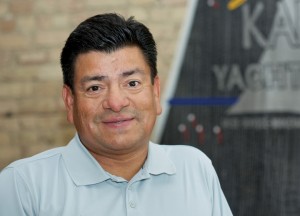
From that, Sandoval and Jack Buoscio (one of the other boat owners) formed a friendship with the then-owners of Darfin, Joe and Elaine Darby and started working some boat shows with them. When the Darbys were ready to sell, Sandoval and Buoscio took the plunge in 2002, eventually changing the business name to Karma Yacht Sales, named after that first Beneteau.
Since then, Karma has garnered attention throughout the industry for its business success, as well as Sandoval’s involvement in American Boating Congress, the Recreational Boating Leadership Council and other groups.
The company won Beneteau’s Dealer of the Year award in 2011 and has won multiple Beneteau President’s Awards for sales and service. Karma has sold more Beneteau 36.7s than any other dealer in North America and owns a 38 percent market share – up from 25 percent in 2002.
Perhaps most impressively, the Karma team has lowered the average buyer age from 58 to 52 over the last decade. That shift was an important part of the company’s strategy, Sandoval said.
“I’ve been an advocate … that you have to have people that mirror the demographic you’re looking to pursue,” he said. “When we bought the business we were in our late 30s and a lot of the people we were talking to in our circles were in similar life situations to us – recently married, one or two children – so we really started promoting that use of the boat as a family getaway spot.”
At shows and in other marketing, the Karma team emphasized that a Beneteau wasn’t something someone had to wait to own, focusing on affordable monthly payments and talking about making it a part of family life.
At the same time, Sandoval was pushing Beneteau to include a more diverse pool of models in their photography, showing more women at the helm and more families on the boat.
The same rules apply to attracting other ethnicities to boating, he said.
“People like to do business with people they can relate to – the more diverse pool you have in service and sales, the better,” he said. “Like attracts like.”
Karma has been focusing on tapping the Hispanic business owner market by partnering with local business networks in Chicago and hosting an event for the U.S. Hispanic Chamber of Commerce. Hispanic media has also picked up on Sandoval’s story, generating positive coverage for him and the company.
While minority groups offer significant untapped potential, the industry needs to be thinking about all potential customers.
“Our growth has to come from expanding awareness of boating, period,” he said. “It’s really easy and simple to continue doing what we’ve always done and that’s not working.”
That’s why Sandoval thinks it is so important to participate in efforts like the Growth Summit and Recreational Boating Leadership Council.
“I was raised to be very conscious of not only making a living but trying to create something better,” he said. “If we grow the exposure of the industry, it grows the opportunity for everyone.”
See also:



